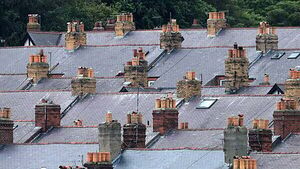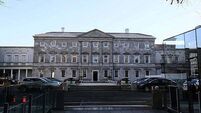Residential property prices on course to grow by 7.5% in 2025

Kenneth Fox
Residential property prices are on course to grow by 7.5 per cent in 2025, according to analysis from Davy.
Ireland’s residential property prices grew 7.6 per cent in September, and strong momentum is evident across house/apartment and different geographical areas.
With three quarters of this year complete, they now expect a full-year increase of 7.5 per cent, up from 7 per cent previously.
While household transaction volumes were very strong again in Q3 (up 16 per cent on Q3 2024), new dwelling completions were less buoyant, up 4 per cent; likely down to slower Q3 social housing delivery.
Residential property price growth held steady in month-on-month (mom) terms at 0.9 per cent in September, and increased to 7.6 per cent in year-on-year (yoy) terms.
August's monthly change was revised down slightly to 0.9 per cent from 1 per cent previously, while prices grew by 7.5 per cent yoy.
With three quarters of data now available, the carry-over growth rate for 2025 is up to 7.3 per cent.
As a result, it is now all but certain their 7 per cent forecast for residential property price increases this year will be too low.
They expect 7.5 per cent to be the most likely FY2025 result; this is consistent with monthly price increases slightly above 0.4 per cent on average in Q4. We retain our prior forecasts for 2026 (5.5 per cent) and 2027(4 per cent).
Davy said Dublin prices picked up to 0.8 per cent mom and fell to 5.3 per cent yoy, from 0.7 per cent mom and 5.5 per cent yoy in August (previously these were 0.6 per cent and 5.3 per cent respectively).
For homes outside Dublin, prices decelerated to 0.9 per cent mom but still brought the yoy figure up to 9.4 per cent.
Double-digit 3m/3m annualised price changes remained both nationally (11 per cent) and outside Dublin (13.1 per cent), whereas it was 8.5 per cent for Dublin.
Across Ireland, there was broad momentum for increased prices. As has been the case for several years, this reflects a combination of strong new demand (via growth in employment, income, population), a large overhang of pent-up demand, and new supply running well below what is needed for stabilisation in Ireland’s residential property market.
Transaction volumes grew far stronger in Q3 compared to new dwelling completions
Strong growth in transactions for new properties continued in September, up 30 per cent yoy, and Q3 as a whole was also strong (up 16 per cent).
However, we already know Q3 growth in new dwelling completions was not as strong, up 4 per cent.
This suggests the delivery of social housing stock for local authorities and approved housing bodies (AHBs) was weaker in Q3. By values, new-property transactions grew 34 per cent to €485 million, while existing properties grew 16 per cent to €1.52 billion.






